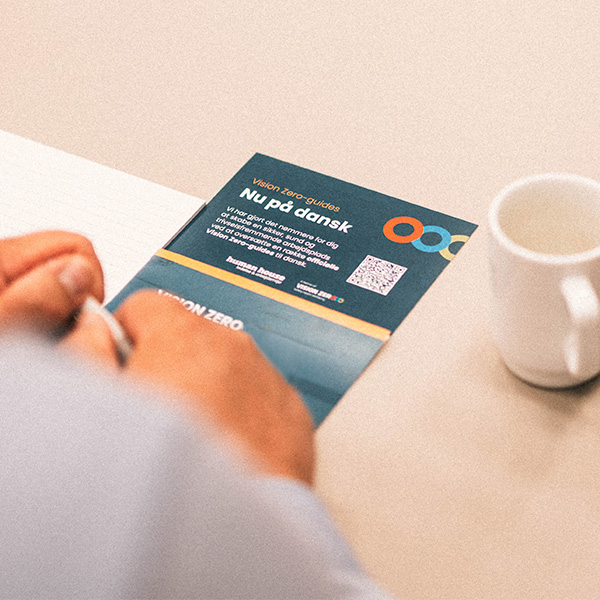Vision Zero
An international mindset for prevention
Vision Zero is not merely a goal. It is founded on the overarching belief that all work-related accidents and occupational illnesses can be prevented. For an organisation to unite around a common objective – eliminating accidents, illnesses, and injuries at the workplace – it is essential that everyone shares the same knowledge and foundation for fostering and maintaining a strong prevention culture. As a Vision Zero company or organisation, safety, health, and psychosocial wellbeing are fully integrated into your overall business strategy.
At Human House, we are proud members of the global Vision Zero community, and we can support your organisation in establishing a shared Vision Zero mindset as an integral part of your workplace culture.
Explore our Vision Zero services
Vision Zero 7 Golden Rules
Building a robust prevention culture takes time. As an official Vision Zero partner organisation, Human House provides strategic advice on how to embed the Vision Zero approach in your company in a way that actively supports and develops your daily operations alongside your broader business strategy.
The journey towards Vision Zero is guided by the 7 Golden Rules of Vision Zero, which build on proven, tangible management models.
1. Take leadership – demonstrate commitment
2. Identify hazards – control risks
3. Define targets – develop programmes
4. Ensure a safe and healthy system - be well-organised
5. Ensure safety and health in machines, equipment, and workplaces
6. Improve qualifications - develop competence
7. Invest in people - motivate by participation

Vision Zero guides in Danish
In cooperation with the International Social Security Association (ISSA), Human House has translated five Vision Zero guides into Danish.
Each guide serves as a practical tool to help you create a safer, healthier, and more thriving workplace – regardless of your organisation’s size, sector, or previous experience with Vision Zero.
Furthermore, Human House is a proud co-author of the official international Vision Zero guide on psychosocial wellbeing: How to create a healthy work environment and promote wellbeing at work with Vision Zero.
Human House x Vision Zero
As a Vision Zero partner, Human House is actively engaged in the global effort to improve safety, health, and psychological wellbeing at work, and to prevent occupational accidents and diseases. Through presentations and moderation at international exhibitions and events, we contribute our extensive experience in Vision Zero and strategic occupational health and safety. We also host webinars in collaboration with Danish and international companies working proactively with workplace safety and health, with the goal of reducing the global economic burden caused by poor working conditions.

Assess your prevention level with the Maturity Scale Model
The Vision Zero Maturity Scale Model provides a simple and effective overview of your organisation’s current prevention level. It is a valuable tool to help you raise your company’s prevention standards and achieve long-lasting change.
Vision Zero assessments
As an international Vision Zero partner, we offer organisational assessments designed to measure and evaluate your initiatives in safety, health, and psychosocial wellbeing.
Vision Zero workshops
We facilitate professional Vision Zero workshops for managers, health and safety professionals, and employees, providing in-depth expertise that has a real impact on your business.

Book a free online meeting
Are you interested in Vision Zero, or would you like to learn more about how to start your journey towards a higher level of prevention in your organisation? Book a free online meeting.